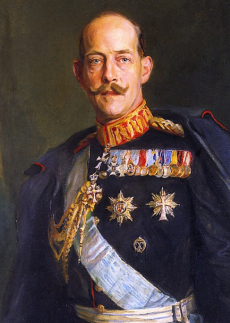
Of all the historic Royal Families in Europe, Greece doesn’t really feature very much. Whereas the monarchies of Britain, France, Spain and Russia are school textbook regulars, you might only hear of the Greek Royal Family in passing. It’s a shame, because they had a very turbulent existence, until they were finally ousted in 1973. The experiences of this Royal Family fit in with events in Greek history at the time, as well as being a constant reminder of Northern European influence in this southern region. Let’s have a look at their on-again-off-again two and a half centuries of rule.
The first monarch was Otto, who existed from 1832 until 1862. After the successful Greek War of Independence, which finished that year, there was a bit of a void left by the Ottoman Turks. It was clear that Greece would become a new state, so other European countries were trying to get some influence there. Otto became king when he was under 18, which might have happened to Queen Victoria had her circumstances been different.
He had a council of advisors to help him make decisions, and also the support of the British government (and banks)! However, although Otto himself was not particularly hated by the Greeks just yet, his council was – people said they had just exchanged Turkish tyranny for Bavarian tyranny. Brave heroes who had fought in the Greek war were arrested, which made this Regency even more unpopular. After 30 years of unpopularity and failing to solve Greece’s problems, this king was kicked out and replaced by a temporary government.
It was this Greek government that actually chose King Alfred, Queen Victoria’s second son, to be the new King of Greece. However, he was rejected, as Britain was a member of the Great Powers. It wouldn’t be fair on the other countries for Britain to have undue influence, so eventually they gave it to a member of the Danish royal family. Foreign involvement has always been prominent in Greece – after all, it wasn’t a Greek family that was chosen!
The first member of this family to rule was King George, who married one of Queen Victoria’s grandchildren. He was also very young when he took the throne, and reigned for almost 50 years. However, he was assassinated in Thessaloniki while he went on a walk. Him and Eleftherios Venizelos (read my article on him for more information) agreed on some things, and generally got on better than with George’s successor.
George’s successor was Constantine, a man who is largely believed to have sympathised with the Kaiser during the First World War. They were related, but once Greece had joined the war on the side of the powers, his position become difficult as Venizelos became popular. After their big dispute which lasted about a year, Constantine left in 1917 for Switzerland, but came back to Greece in 1920 after Venizelos had lost the election. However, after just 2 years, he had to give up the throne again and died shortly afterwards.
After a confusing period of instability and the monarchs coming in and out of power, the Greek Royal Family was eventually deposed in 1967 by the new military dictatorship. A public vote was held in 1973 to confirm their abolition, which was a bit doubtful considering the regime itself was not democratic. After this dictatorship was deposed, another referendum confirmed their abolition, almost with a 70% majority.
Nowadays, Greece is a democratic country, like most countries in Europe. However, Prince Phillip (the Queen’s husband) is descended from the Greek Royal Family, and was born on the island of Corfu. They may not exist anymore, but if you ever go to Athens you’ll learn about all the places they once lived, and how the role of the President basically replaces them today.
Image credit: https://commons.wikimedia.org/wiki/File:Constantine_I_of_Greece_(1914).jpg

0 Comment:
Be the first one to comment on this article.